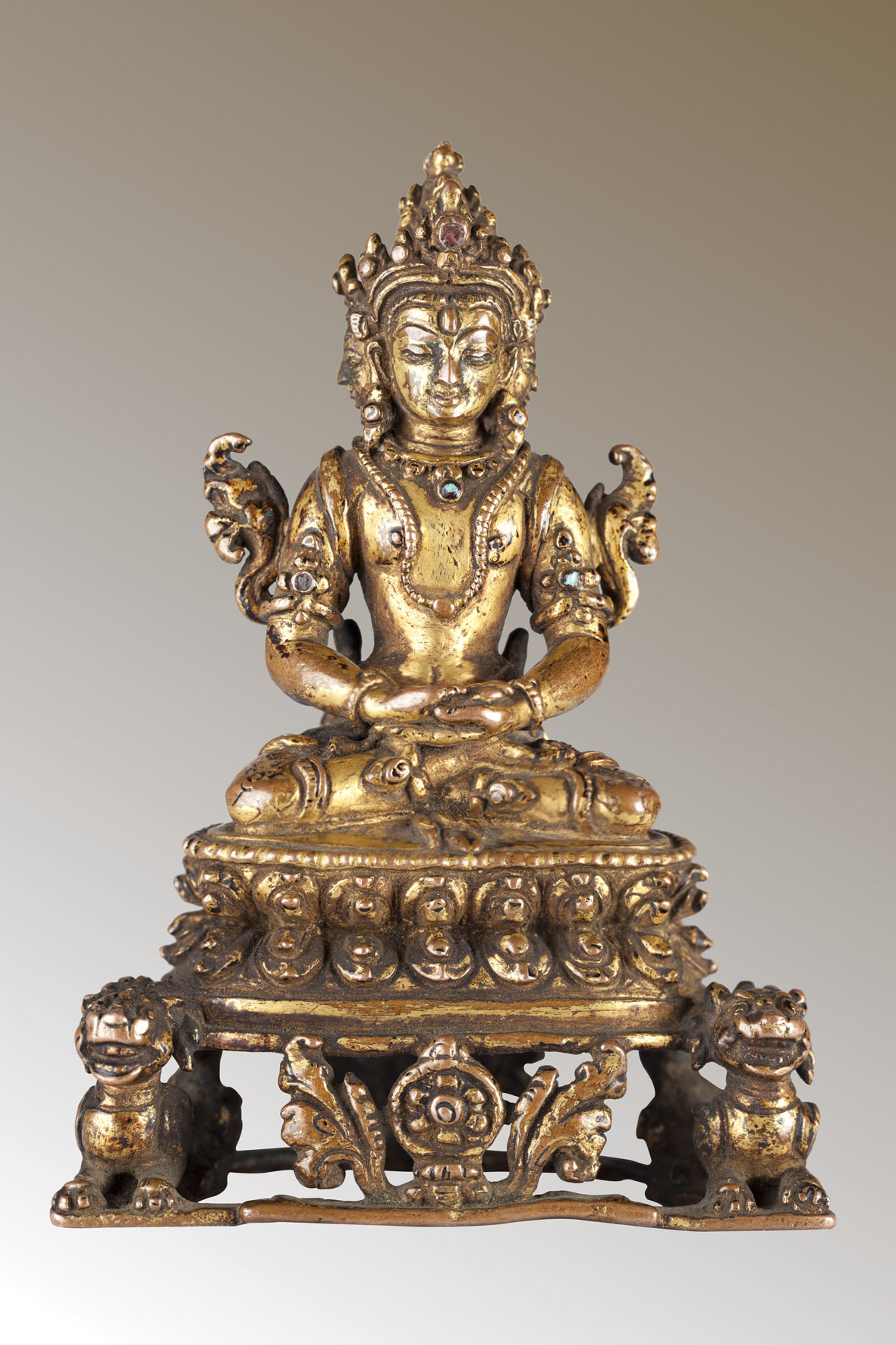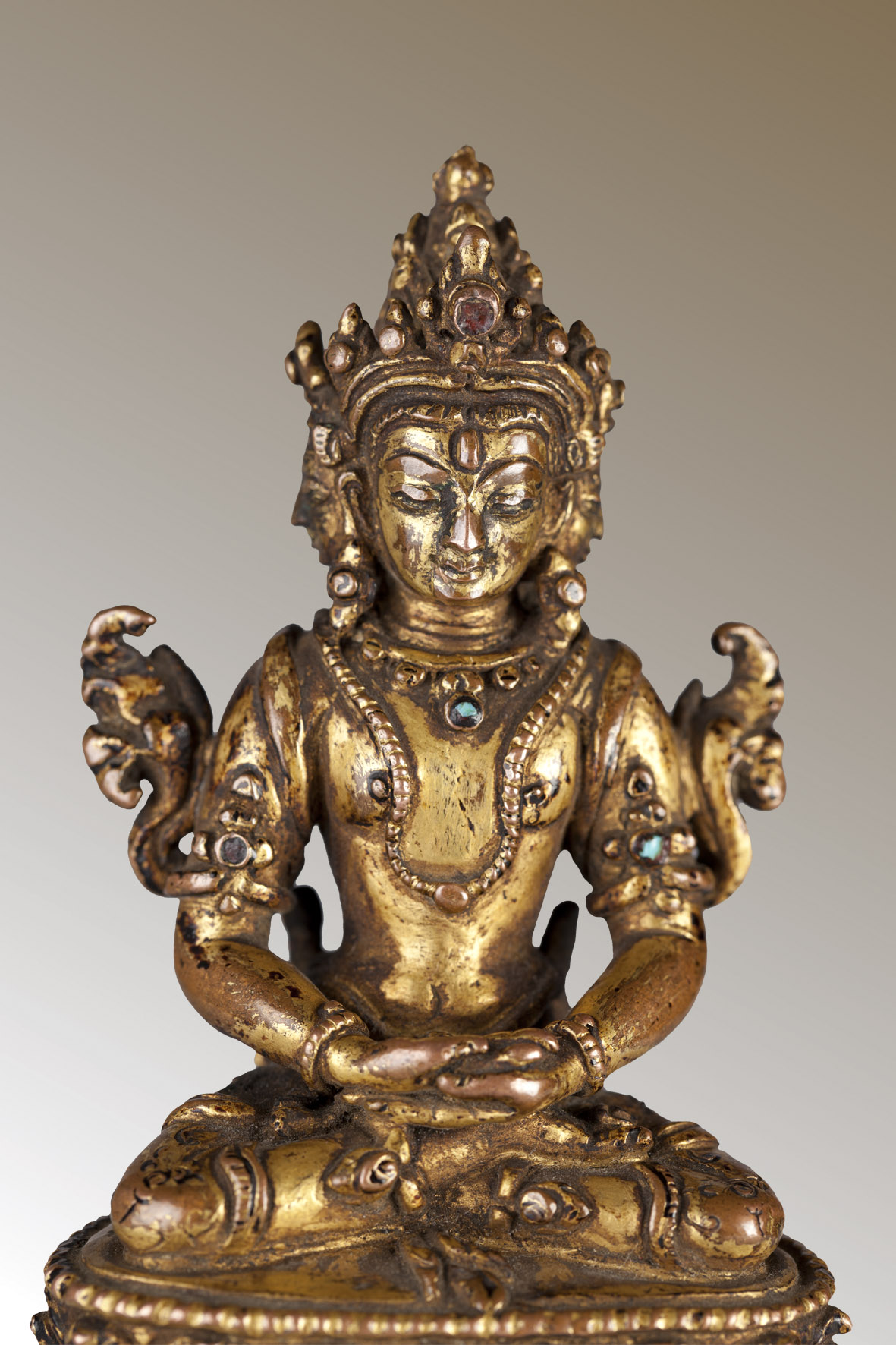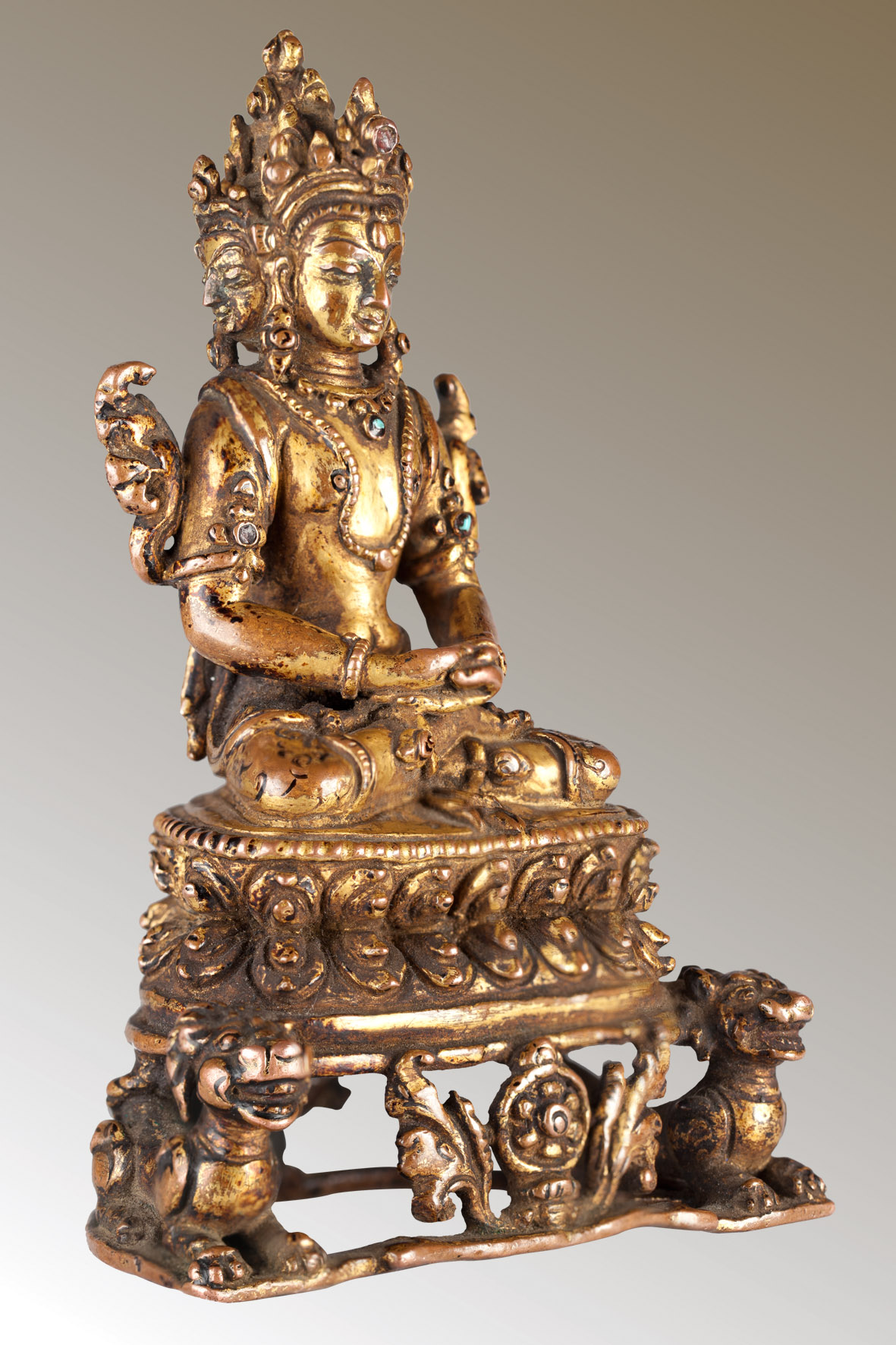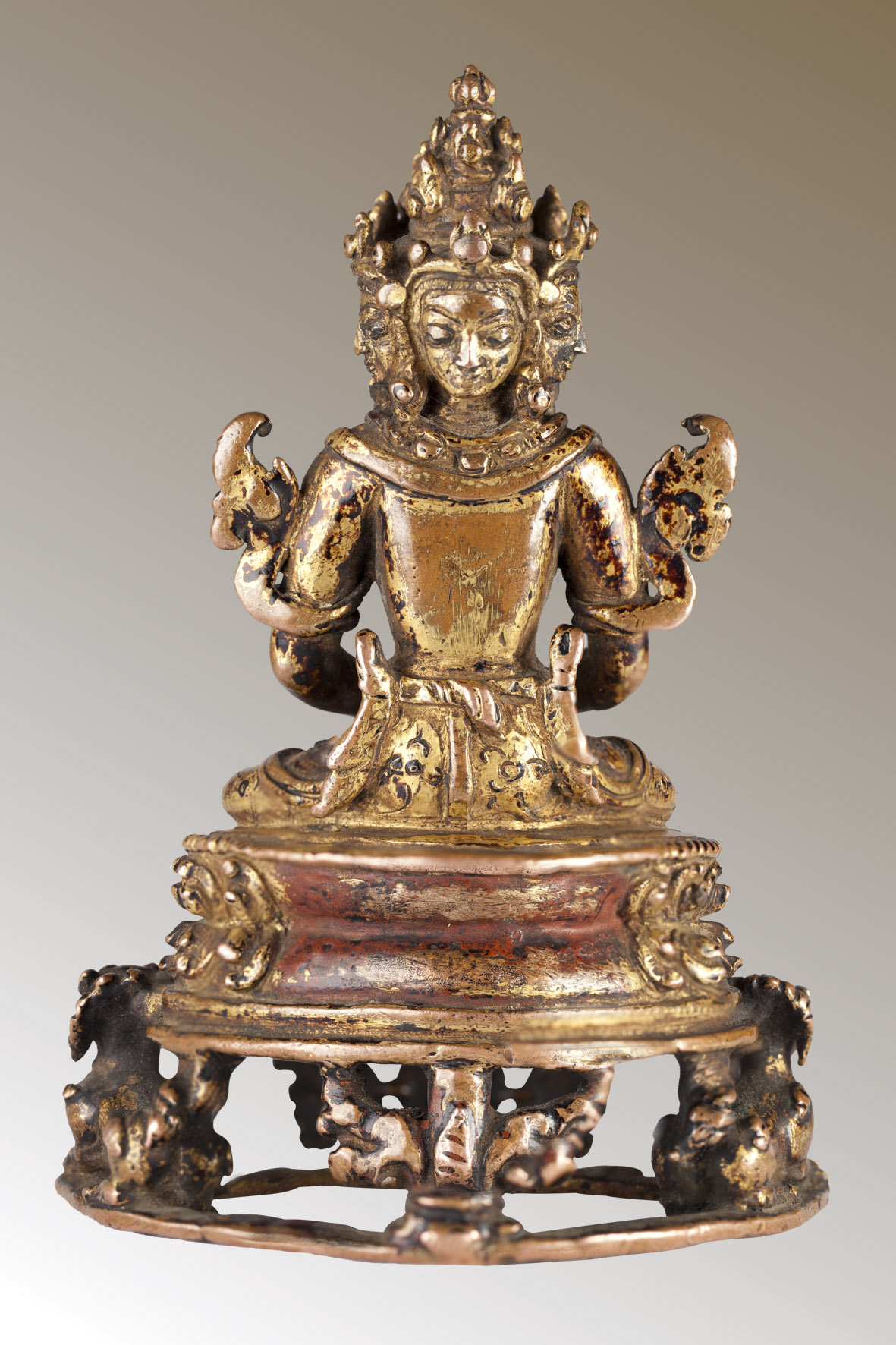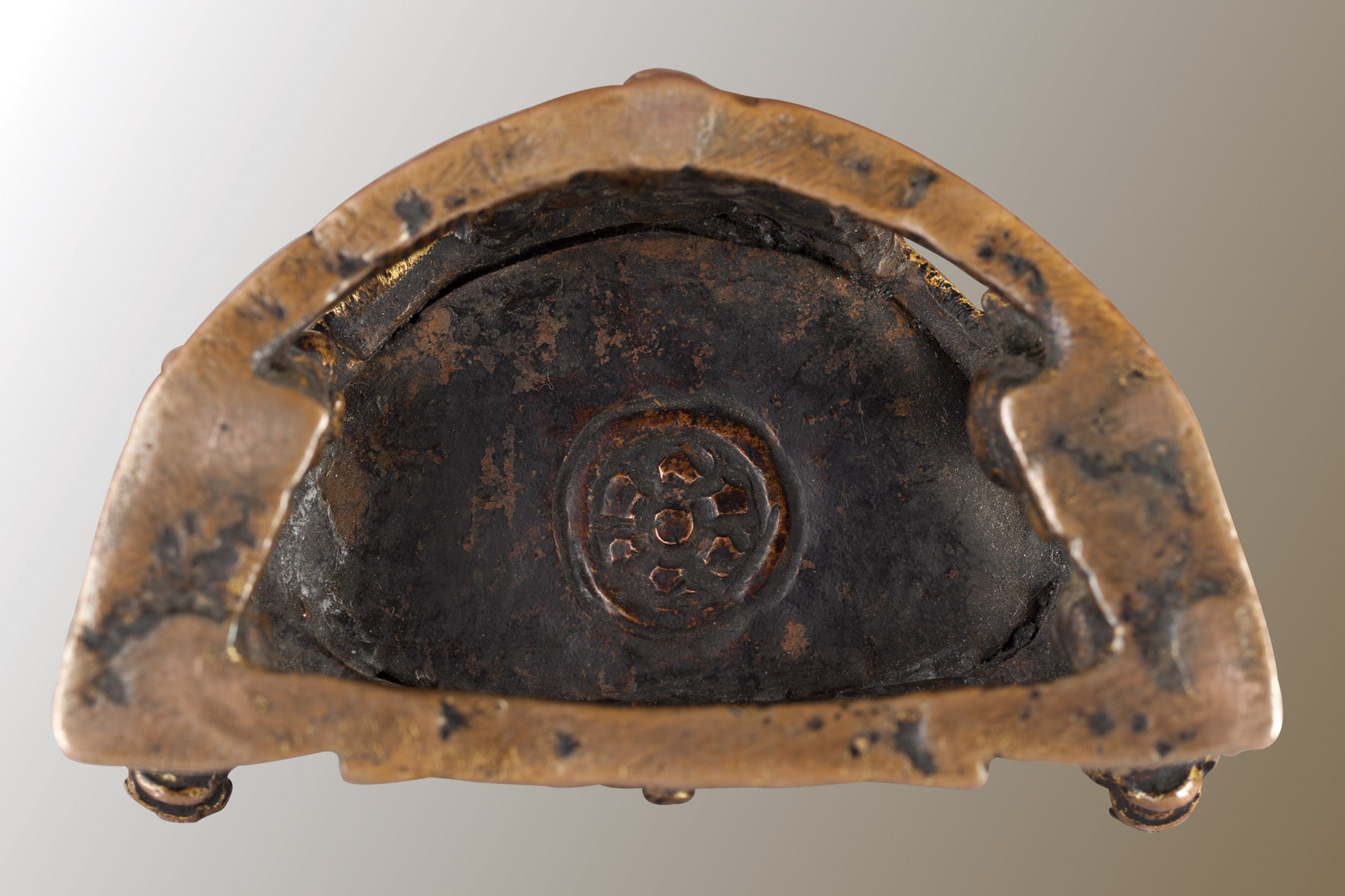Amitayus (Sambhogakaya)Nepal - Gilded copper alloy - 13.5 cm - 5.32 in - Early Malla Period, 15th centuryThe worship of the Cosmic Buddha Amitâbha (“Infinite Light”) and his variant Amitâyus (“Infinite Life”) had already developed by the 3rd century C. E., especially in the regions of north-western India. Each of the Cosmic Buddhas has his own specific cardinal placement. Amitâyus presides over the western (1) direction and his colour is red, like the setting sun. His name, linked with light, may have derived from contact with the Zoroastrian religion, whose chief deity is Ahura Mazda, god of light, the worship of whom was widespread in the Iranian world along the north- western border of India (2). Amitâyus is pictured in a paradise called “The Land of Bliss” and described in the related sutra (3), which had already been translated from Sanskrit into Chinese during the mid-3rd century (4). The aim of that short text, which describes a kingdom of wellbeing and prosperity where there is no suffering, was to indicate the road for reaching such condition through the practice of the “conscious recollection of the Buddha”. That meditative procedure was in fashion in the so-called school of the “Pure Land”. The main feature of this procedure consists in attempting to make contact with the Buddha Amitâbha, developing a devotional behaviour. Indeed, it is held that Amitâyus is able to bestow a long life on believers, a characteristic symbolized by the vase he holds, containing the nectar of the ambrosia which bestows immortality. The leaves hanging from the edge of the vase represent the four Buddhas of the pentad, while Amitâyus himself is represented by a jewel on the top (5), in this case, a triple gem symbolizing the Buddha, his doctrine and the community of his followers. (1) David Snellgrove, Indo-Tibetan Buddhism. Indian Buddhists & Their Tibetan Successors, Shambala, Boston 1987, p. 56. (2) Erberto Lo Bue, Tibet. Dimora degli dei, La Rinascente, Mi- lano 1991, p. 41, fig. 12.
ALC (Free Circulation) |
